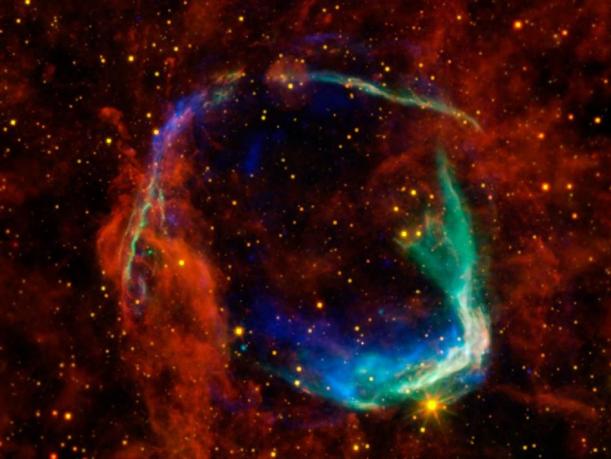| GO BACK (DESKTOP VIEW) | GO BACK (MOBILE VIEW) |
Neutrino Flavor Evolution in Medium
Mentors:Vincenzo Cirigliano (cirigv@uw.edu), Yukari Yamauchi (yyama122@uw.edu) Prerequisites:Basic knowledge of quantum mechanics and statistical mechanics, and basic coding skills, which will be refined during the project. What Students Will Do:The student will learn how neutrinos evolve in a hot and dense astrophysical medium and will perform numerical studies of neutrino evolution in various astrophysical settings, of increasing complexity. The first step will involve studying neutrino evolution in the sun. The student will then explore generalizations relevant to other astrophysical objects, such as supernovae, including in the simulation more and more realistic microphysics. Expected Length:One year |

Image Credit: NASA/ESA/JPL-Caltech/UCLA/CXC/SAO |
Project Description:
Neutrinos are perhaps the most mysterious and elusive of the known particles, because they interact very weakly and have tiny masses, the heaviest neutrino being at least a million times lighter than the lightest charged particle. Yet, they play a crucial role in the early universe and the evolution of stars, as in these environments neutrinos are copiously produced and transport most of the energy and entropy. Moreover, observations of solar, atmospheric, reactor, and accelerator neutrinos indicate that a neutrino produced in a given flavor state (electron, muon, or tau) can morph to another flavor state as it evolves, through a quantum mechanical interference effect. In turn, these so-called neutrino oscillations can have a big impact on the neutron-to-proton ratio, a key quantity in determining what elements are synthesized in the early universe and the ejecta surrounding supernovae and neutron star mergers. This project will explore, in a simplified setting, some open questions (see for example Ref. [1]) related to neutrino flavor evolution at temperatures such that interactions with other neutrinos in the medium cannot be neglected.
References:
[1] S. Shalgar and I. Tamborra, Neutrino flavor conversion, advection, and collisions: Toward the full solution, Phys. Rev. D 107 (2023) 063025, [arXiv:2207.04058].
